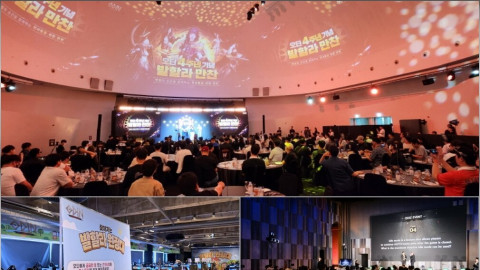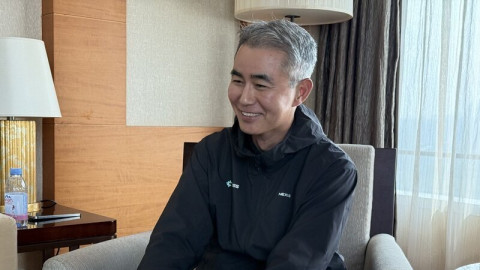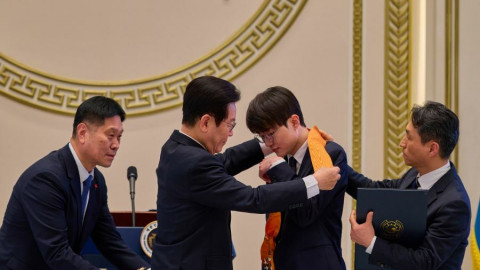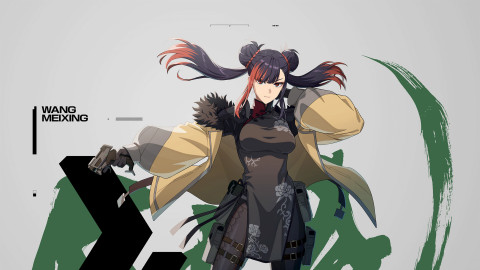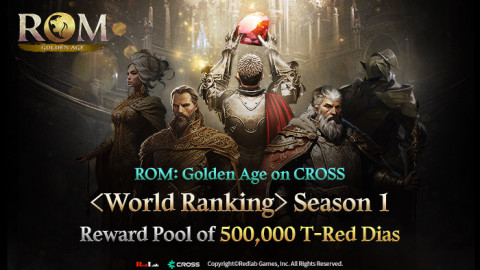As an ongoing effort leading up to the Heroes 2.0 launch on April 25th, Genji has been revealed as a new hero along with Overwatch’s Hanamura battleground. This is in line with the Heroes 2.0 schedule, which will showcase new bundles, cinematics, Nexus Challenge 2.0, an unannounced event, and, finally, another new hero.
Following up on the D2 Amazon Cassia, Genji from Overwatch will be joining Heroes’ roster as a ranged assassin. As the younger brother of the Shimada Clan, Genji has been a widely popular offense hero for his agile ninja movements and kill potential with Dragonblade.
In addition to the previously announced features like the revamped progression system, Heroes will see the Shimada clan’s home turf, Hanamura, as the first payload style battleground in the game. Staying faithful to Heroes’ commitment to incorporate diverse map design, Hanamura looks to push the boundaries of the MOBA genre.
At the Heroes 2.0 media event, influencers and members of the media got a chance to try out Genji and Hanamura in the test build of the game. Players will also be able to get their hands on the new hero and battleground in the PTR. Finally, Senior Concept Artist Peter Lee held a brief Q&A session to answer a few questions.
▣ Genji: High mobility ranged assassin who specializes in backline disruption

Just like other Overwatch heroes including Zarya and Lúcio who were ported over to Heroes, Genji retains all of his kit, as well as his general implication as a high risk and high return hero. Although Genji is one of the most mobile heroes in the game, adept at picking off squishy and low health enemies behind enemy lines, small mistakes can be quite costly due to his relatively low health.
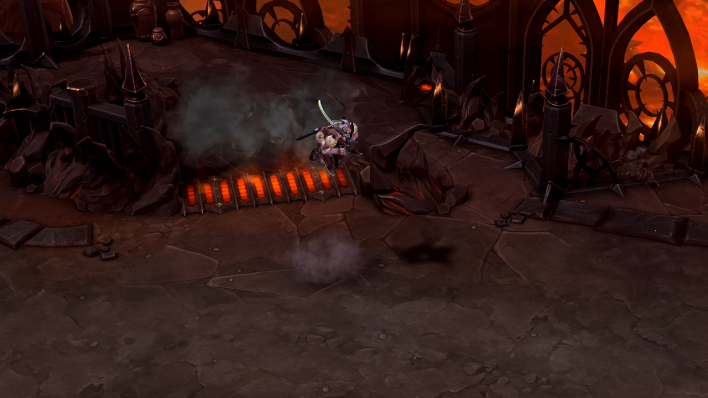
Cyber Agility [Hero Trait]: Genji can double jump over terrain objects, similar to how Lúcio can glide on terrain and structures with Wall Ride. Note that while in the air, Genji will dodge all incoming damage. Efficient use of the hero trait will differentiate lethal Genji players from the rest of the pack. He can use talents to increase the radius of Cyber Agility while mounted or gain movement speed after jumping over terrain.

Shuriken [Q]: Genji throws out three ninja stars in a cone, somewhat reminiscent of Li-Ming’s Magic Missiles. Similar to his kit in Overwatch, Genji can more easily hit all three Shurikens on a single target if he gets close or sprays Shuriken over multiple targets from a distance. Shuriken holds three charges (nine projectiles in total), and talents allows Shuriken to deal additional damage if all three shots are hit on a single target and also allows Shuriken to pierce through enemies.

Deflect [W]: Genji gains Protected status while the skill is active and reflects incoming attacks to the attacker. Unlike in Overwatch where Deflect reflects equivalent damage, Heroes’ version throws out the same number of daggers per hits he takes during the duration. For example, Kael’thas’ Pyroblast counts as a single hit, whereas Tracer’s one round of bullets counts as ten hits. With talents, Deflect can be made to have a shorter cooldown, deal more reflect damage, and cover all directions.

Swift Strike [E]: Genji dashes forward, dealing damage to enemies in a straight line. If he gets a kill with Swift Strike, the cooldown resets the same way it does in Overwatch. This is how he can rack up kills on low health enemies during teamfights. Although the Swift Strike’s travel distance is quite long, the target area is very narrow, somewhat akin to Raynor’s Penetrating Round.
It also cannot be canceled, which means that once the skill is activated he will travel the full distance. This is quite effective in pursuing enemies in retreat, but it can also be dangerous because he can end up behind walls and towers. Among other things, talents can increase movement speed after Swift Strike, deal extra damage to those at the end of the path, reduce cooldown, or increase Swift Strike’s damage per enemy hit with the skill.

Dragonblade [R1]: With the first heroic ability, Genji unsheathes his blade for 8 seconds, slashing enemies in a wide arc by pressing the R button. If he gets a kill with Dragonblade, the cooldown on Swift Strike resets, maximizing the havoc by combining the two skills. As soon as he activates his heroic ability, the enemy team will immediately try to focus him down with CC and burst damage.
A good Genji player will have to know when to use his Dragonblade for maximum impact and long survivability. With the level 20 talent, Dragonblade can be specced to increase its duration every time Genji deals damage with the skill.

X-Strike [R2]: The second heroic ability has two stages. First, Genji leaps into the air and marks a large “X” on the ground, dealing damage to enemies caught in the mark. Then the X-mark explodes after 1 second, dealing even more damage. Just as it is with his trait, Genji dodges all damage when he’s in the air. X-Strike has massive AOE damage potential in teamfights and can be a better choice in certain situations. The level 20 talent can also reduce the ability’s cooldown based on the number of enemy heroes hit.
As is the case with Overwatch, what Genji loses in lackluster damage and low sustain, he makes up for in high mobility and heroic ability potential. The fact that he lacks CC and is very vulnerable to CC makes him a high skill cap hero. OGN commentator Hyeongwook “Oprime” Seo said, “Although he’s as difficult to play as he is in Overwatch, with high kill potential and high risk, I’m excited to see a Genji-centric comp similar to an Illidan all-in comp.”
▣ Hanamura: Battlefield of Eternity meets Towers of Doom

Home to the Shimada Clan, Hanamura is a two-lane payload map with a wide, open layout. It’s much larger than other two-lane maps like Braxis Holdout or Haunted Mines in order to accommodate the first ever payload style of play in Heroes. Like Towers of Doom, players can’t directly attack the Core and instead have to push the payload to its destination, at which point it will turn into a turret to fire missiles at the enemy Core.

Also unlike payload maps in Overwatch, Heroes’ Hanamura features up to 4 payloads as the game goes on (starting with one for each team). It falls on the teams to make strategical decisions about whether to push your own payload or to stop the enemy’s. Destroying enemy Forts and Keeps will arm your payload with up to 5 extra missiles. Considering that the Core can only take 7 hits before it goes down, a single missile has significantly more impact than shots in Towers of Doom.
Because of the open layout and rather large map space, heroes with global mobility skills will likely take priority in Hanamura. For example, heroes like Falstad and Dehaka can choose their own battles by pushing their payloads in one moment and stopping the enemy payload in another. Areas with high contention are where the payload tracks intersect, marked by red and blue lines. Heroes with high sustain will be more suited to push their own payload, while heroes with high mobility like Genji may be better for harassing the enemy cart.

There are new types of mercenaries introduced to fit the Overwatch theme. Similar to the Boss in Towers of Doom, the Boss in Hanamura will also deal damage to the Core directly when captured. The Boss deals massive AOE damage and can suck in a hero for a period of time, similar to Stitch’s Gorge. Most mercenaries in the past helped the team push lanes, whereas Hanamura’s drop power-up items, which can be used from the inventory the same way Warheads work in Warhead Junction.

For instance, the samurai mercenary drops an item called Healing Pulse which can be used to restore a good chunk of health to you and your team. Similarly, the turret mercenary drops a turret item, which can be placed on the ground to defend a point. It is worth noting that the turret can also be attached to a payload to further make it tough for the enemy to interfere. Lastly, one of the omnic stooges shot by Hanzo in Overwatch’s animated short, Dragons, makes an appearance as a mercenary. When secured, he drops a Dragon Spirit power-up item, which sends out three scouting drones to reveal enemy positions.
Regarding Hanamura, OGN commentator Jeongmin “King” Shin commented, “I expect to see new objectives and mercenary camps making diverse strategies in this brightly themed battleground.” He also expressed a concern that, “Healing Pulse seemed to have too much of an impact in teamfights, with its heal output rivaling some of support Heroic Abilities. Additional tweaking may be in order.”
▣ Q&A Session with Senior Concept Artist Peter Lee

Could you tell us about what you do at Blizzard?
I’ve worked at Blizzard for 12 years and worked on everything from WoW up until early Cataclysm, Diablo 3, the StarCraft 2 Trilogy, Overwatch, and Hearthstone illustrations. My main duty nowadays is universe creation, background work, and map design in Heroes. Since I’ve worked on various projects, I find it very interesting that Heroes is bringing together different franchises. Sometimes I have to face my own demons in revisiting my old work, but I’m thoroughly charmed that one game can retain nuances from all these different titles.
When did you start working on Genji and Hanamura?
Heroes and battlegrounds have separate design schedules, but they both take months to develop. We didn’t have a package type of event planned this time, but everything just came into place in a perfect storm. So, we took the opportunity to announce them together.
Out of all the sources in the Blizzard multiverse, Why did you choose Genji and Hanamura? Can you also tell us about the decision-making process?
First off, hero designers have a list of heroes and decide which of them are needed at the current point in time. As an artist, I believe visuals are the most important aspect, but since one of the Blizzard’s design pillars is “Gameplay first,” it means that the design team felt that Genji’s kit and abilities are needed at the moment. As for battlegrounds, we started with Heroes-specific ones like Raven Lord, King’s Crest, and Luxoria. Then we moved on to Diablo and StarCraft. We felt that it was a good time for an Overwatch battleground to enter the Nexus. We chose Hanamura because it was one of the battlegrounds that gets the most positive feedback in terms of art and uniqueness. I work closely with the map design team to support what they want to do in terms of gameplay while avoiding the pitfalls of visual stereotypes and cliches.

What challenges did you have in porting Genji over to Heroes?
From a design standpoint, we had to change Deflect’s description from reflecting damage to reflecting projectiles due to balance reasons. Likewise, X-Stirke had to be changed to better fit the Heroes’ gameplay. Artistically, FPS games have to have more details than MOBAs with a top-down view because players can see everything up-close in a first-person view. Since Heroes often deals with 10 heroes duking it out in brawls, we approached Genji by emphasizing his silhouette and sacrificing some of the details. All heroes that come to the Nexus go through this artistic process.
Where does Heroes’ Hanamura fall in terms of the timeline?
Although We try our best to stay faithful to the original work, we also add the Heroes touch since it exists in the Nexus. One of our main goals is to make it feel familiar but new at the same time. As you can see with Hanamura, it has to feel exciting to experience all your favorite games in one place. Our job as an art team is to preserve those nuances while offering fresh perspectives.
In the past, kill streak flames and emotes were originally deleted because the development team felt that it may further add clutter to the screen. What made you change your mind regarding sprays, banners, and taunts?
The design team could explain it much better than I can but I’ll tell you what I know. We felt that it was too difficult to express individual prowess with the old system. We’re aware that an excessive use of items like sprays and banners can interfere visually with gameplay. Having said that, we wanted to give players an opportunity to express themselves without having those detrimental effects by bringing down the color saturation and brightness of those items.

Heroes has historically used dark purple as the main theme, but the PTR’s loading screen looks more light blue. Any reason for the change?
That’s a good observation. As you can see in the PTR, the loading screen got brighter. One of the things the art team is working on is to use brighter colors to make the game feel more inviting and move away from the darker tones that we initially used. We take great care with colors and lighting, just as much as the design team puts effort in their work. For example, Hanamura is brighter than other maps. One consistent positive feedback we got on the battleground was that it was easy to focus on the gameplay due to the sharp contrast between heroes and maps. We’re bound to receive more feedback once it’s out on the PTR, so please voice your opinions to make the game better.
What are your thoughts on the current iteration of mercenary power-ups? Healing Pulse seems to have a disproportional impact in teamfights when you compare it to the effort it takes to capture the camp.
I’m also interested to know more about that. When it goes on the PTR, please test the battleground and send us feedback. The more player feedback, the better. I’ll try to relay that to the design team.
Do you think the power-up system can also be implemented to previously released battlegrounds?
Not likely. That said, the development team’s motto is “Never say never.” There’s no rule banning us from introducing power-ups in the old battlegrounds. That said, I feel that those battlegrounds have their own governing elements, so we plan to keep it as the Hanamura’s unique aspect. I’m not sure if the old battlegrounds really need another system tacked on.

Any progress on the Arthas body proportion rework, which has been often requested by the community?
It’s on our to-do list but it’s a bit down the line. To accomplish that task, at least one new hero release will have to be postponed. We believe new hero releases have higher priority than reworking Arthas’ proportions. The reason Arthas’ proportions looks very different than other heroes is that he was designed from the WarCraft 3 model where he made his first appearance. We didn’t think much of it at first, but we’re a little bummed out that he always becomes the point of comparison every time a new hero is released. It’s one of the issues that we’ll definitely tackle no matter how long it takes, so I hope you bear with us.
Where do you get your inspiration for hero skins?
It’s hard to say because they come quite randomly. Our development motto is to make games that we want to play. So, we reflect those wishes in the skin designs and think of ways to make skins for different silhouettes. These days though, it’s more visually interesting to make themed skins across different heroes like the pirate ones. Other than that, there’s no special rule in how we come up with skin concepts.
Sort by:
Comments :0


